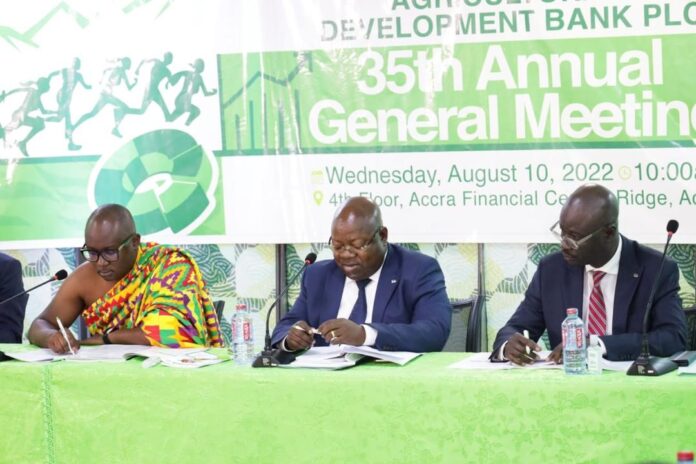
The Managing Director for Agricultural Development Bank, Dr. John Kofi Mensah says the bank has introduced a new strategy that would ensure a reduction of its Non-Performing Loan portfolio. The Bank’s NPLs portfolio witnessed a reduction from 34 percent in 2020 to 31 percent in 2021.
Speaking at the 35th Annual General Meeting of Agricultural Development Bank Plc, Dr. Mensah indicated that the bank target is to bring the NPL ratio within industry brackets by 2023.
“The main concern of the board and management is bringing NPLs to reasonable levels. It cannot be zero, especially looking at the mandate, our core business is agribusiness but we have consistently been pressing down the NPL ratio,” the MD said.
For this reason, the bank is strengthening its monitoring and recovery division. “We are strengthening our monitoring and recovery division. Recently, we have repositioned the monitoring and recovery department into the credit delivery line so, that from the onset of exposure, the monitoring and recovery division are involved so that we can help in monitoring the credit facility instead of waiting for any default,” the Managing Director said.
“Somewhere around 2020, the NPL ratio issue was about 40 percent then it came to 34 percent as of 2019, and then 31 percent then currently in the 20 zones. So, we are hoping to bring it down,” he elaborated.
Industry
The banking industry stock of NPLs increased by 10 percent to GH¢8.9 billion in June 2022, compared with a growth of 15.1 percent in June 2021. A strong rebound in credit growth was also recorded, with gross loans increasing by 33.3 percent in June 2022, compared to the modest growth of 5.7 percent in the previous year.
These developments led to a decline in the industry’s NPL ratio from 17percent in June 2021 to 14.1 percent in June 2022. The adjusted NPL ratio (excluding the fully provisioned loan loss category) also improved to 3.8 percent from 7.2 percent over the same comparative period. Notwithstanding the decline in the NPL ratio, the increase in the stock of NPLs within the year indicated that asset quality risks persisted in the sector.
He noted that the situation could have been better if not for the current macroeconomic challenges. “It could have been better than this but the economic situation in terms of the impacts of COVID on the companies and other geopolitical issues affecting businesses,” he said.
Performance of ADB
Although the economy was yet to fully recover from the pandemic’s ravages, the Bank was more profitable year after year, posting a profit after tax of GH¢ 81.6 million compared to GH¢ 65.4 million in 2021.
This represented 24.8 percent growth in performance in 2021, occasioning a Return on Equity and Return on Assets of 12.09 percent and 1.81 percent against 7.69 percent and 1.14 percent in that order respectively.
The size of our balance sheet grew over the year from GH¢5.7billion to GH¢ 6.5 billion in 2021 representing 12.9 percent growth. Deposits grew by 15 percent from GH¢ 4.2 billion in 2020 to GH¢ 4.9 billion in 2021. By the end of 2021, the capital adequacy ratio was 14.49 percent, above the regulatory minimum of 11.5 percent.









